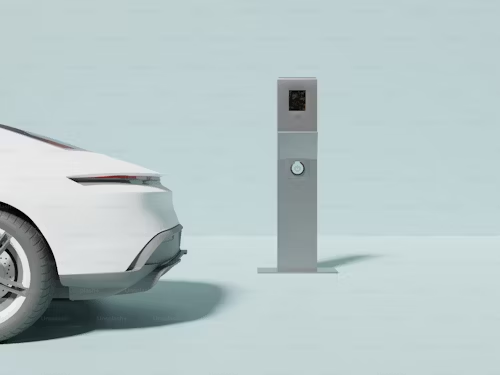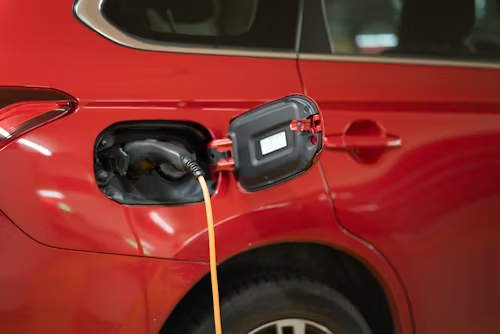The Future of Transportation: Embracing Zero-Emissions and Advanced Mobility Solutions

As concerns over climate change and environmental degradation continue to rise, the automotive industry is undergoing a significant transformation. The shift towards 'zero-emissions transportation' and 'advanced mobility solutions' is not just a trend but a necessity to safeguard our planet for future generations. This blog post explores the innovative realms of 'green car technology', 'electric vehicle solutions', and 'smart vehicle performance', highlighting how these developments contribute to a sustainable future and what consumers can expect as they transition to greener vehicles.
Understanding Zero-Emissions Transportation
Zero-emission vehicles (ZEVs) are seen as a cornerstone in the fight against global warming and urban pollution. These vehicles operate without emitting any harmful pollutants typically associated with internal combustion engines, such as nitrogen oxides, particulates, and carbon dioxide. The most common types of zero-emission vehicles include battery electric vehicles (BEVs), hydrogen fuel cell vehicles (FCVs), and some plug-in hybrids (PHEVs) that can operate in a zero-emission mode.
The benefits of zero-emissions transportation are manifold, impacting not only environmental health but also enhancing energy security and reducing reliance on fossil fuels. However, the adoption of such technologies also poses challenges, including high initial costs, lack of charging infrastructure, and concerns about the ecological impact of battery production and disposal.
Advancements in Green Car Technology
Green car technology encompasses various innovations designed to reduce the environmental impact of vehicles. Here are some key developments:
- Electric Drivetrains: Replacing conventional engines, electric drivetrains offer quieter, more efficient operation with zero tailpipe emissions.
- Regenerative Braking: This technology recovers energy that would otherwise be lost during braking, converting it into electricity to recharge the vehicle’s battery.
- Lightweight Materials: The use of materials such as carbon fiber and advanced composites reduces the overall weight of the vehicle, thereby increasing efficiency and range.
- Improved Battery Technology: Advances in lithium-ion technology and exploration into new materials like solid-state batteries promise higher energy densities, faster charging times, and longer life spans.
As these technologies continue to evolve, they pave the way for more sustainable vehicle options available to consumers, making it easier and more appealing to make the switch from traditional gasoline-powered cars.
Electric Vehicle Solutions for a Sustainable Future
Electric vehicles (EVs) are at the forefront of the shift towards greener transportation. The global push for electrification is supported by governmental policies, environmental regulations, and innovations by automotive manufacturers. Here are some reasons why electric vehicle solutions are critical:
- Reduction in Greenhouse Gas Emissions: EVs powered by renewable energy sources can operate with little to no greenhouse gas emissions, directly contributing to climate change mitigation.
- Energy Efficiency: Electric vehicles convert over 60% of the electrical energy from the grid to power at the wheels, compared to about 20% for conventional gasoline vehicles.
- Lower Operating Costs: EVs generally have fewer moving parts than internal combustion engines, which leads to lower maintenance costs and fewer repairs over time.
- Incentives and Subsidies: Many governments offer incentives for purchasing and using EVs, including tax rebates, grants, and exemptions from certain fees and tolls.
While challenges such as range anxiety and charging infrastructure remain, continual advancements and governmental support are helping to address these barriers, making electric vehicles a more viable and attractive option for many drivers.
Exploring Smart Vehicle Performance
Smart vehicle performance refers to the integration of advanced technologies that enhance the safety, efficiency, and convenience of vehicles. These include autonomous driving features, vehicle-to-everything (V2X) communication, and advanced driver-assistance systems (ADAS). Smart vehicles not only elevate the driving experience but also play a crucial role in reducing traffic accidents and improving traffic flow, which in turn can decrease emissions and energy consumption.
Key features of smart vehicle performance include:
- Autonomous Driving: Technologies such as AI and machine learning enable vehicles to understand and react to their environments, reducing human error and increasing road safety.
- Connected Systems: Vehicles that communicate with each other and with road infrastructure to optimize traffic patterns and reduce congestion.
- Energy Management Systems: Advanced systems that monitor and regulate energy use within the vehicle to maximize battery efficiency and vehicle range.
The integration of these technologies into new models of electric and hybrid vehicles not only enhances performance but also ensures that the benefits of green car technology are fully realized.
Conclusion: The Road Ahead for Green Transportation
The transition to zero-emissions transportation and advanced mobility solutions represents a promising path forward in addressing the urgent challenges of environmental sustainability and climate change. While the journey is complex and fraught with challenges, the continuous advancements in green car technology, electric vehicle solutions, and smart vehicle performance are making eco-friendly cars more accessible, efficient, and enjoyable to drive. As consumers, businesses, and governments collaborate to support the growth of sustainable transportation, we can look forward to a cleaner, greener future on the roads.
Embracing these technologies not only helps protect the environment but also offers a range of benefits to consumers, from cost savings to improved driving experiences. The future of transportation is undoubtedly electric and smart, and it is up to all stakeholders to accelerate the shift towards a zero-emission world.
By staying informed and considering sustainable options for our mobility needs, we can all contribute to this global effort and reap the benefits of advanced mobility solutions in our everyday lives.




